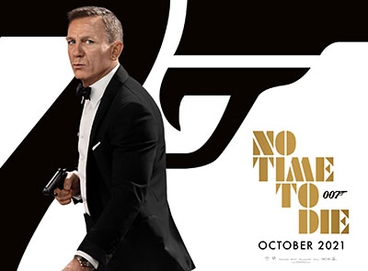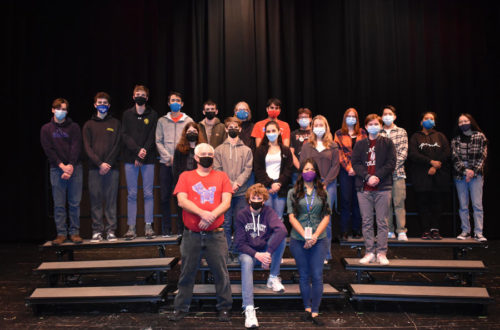A review of the recent sci-fi, multi-part, film adaptation that was not as successful as producers had hoped.
Emily Milton
Staff Writer
The movie Dune: Part One is about protagonist Paul Atreides, the prince of House Atreides, who rules over the planet Caladan. His father, Duke Leto, is ordered by their governing body to take over production and distribution, on planet Arrakis, of the most lucrative commodity in the universe, spice. However, throughout the movie, events occur that send Paul on a more personal journey and put him on the path to reach his destiny as a prophesied savior. This universe was originally produced in a 6-book series by Frank Herbert, which has been adapted many times, the most popular being a 1984 feature film featuring Sting and director David Lynch. The 2021 movie is produced by Warner Brothers Pictures and Legendary Pictures, with Oscar-nominated director Denis Villeneuve (Blade Runner 2049, Arrival) and a score by Grammy winner Hans Zimmer (The Dark Knight, The Lion King).
The marketing of this movie centered around pop culture heartthrobs Zendaya and Timothee Chalamet who have built their following of young adults through projects that push boundaries and have a unique outlook, like Euphoria (Zendaya) and Call Me By Your Name (Chalamet). Although having limited screen time in Part One, Zendaya’s character undoubtedly will play a bigger role in the sequel that has been greenlit for active production as of this December 2021. Chalamet excelled in this role, going beyond his perceived “limited” range by critics as only a moody teenage love interest as he has played in movies like Lady Bird and Call Me By Your Name. The scene that showcases his acting abilities the most is where his “potential” is tested by the Reverend Mother Gaius Helen Mohiam, played by actress Charlotte Rampling. Chalamet portrays a young man struggling to prove his control over a power he doesn’t fully accept, yet to someone he knows he has to master. Throughout the movie, his character Paul must prove himself to many different people including his parents and other powerful mentors. I could truly feel the pain and emotions he endured in the moments he fought not only the physical challenges presented to him but his struggle to accept his destiny and identity.
While I enjoyed the film, one of its problems is that it drags along in many insufficient scenes. While teeming with gorgeous cinematography and world-building, the director indulges in too many of these “beauty shots,” which contributed to an unnecessarily lengthy movie, and would have easily been cut by at least 30 minutes. Furthermore, while the plot and this realm of science fiction is aimed at an older, possibly more sophisticated audience, the casting choices didn’t reflect the appealing demographic. Many older viewers will have little to no background on the two young leads. So who is this movie aimed at? It’s too long and self-indulgent for a younger audience who are fans of Zendaya and Chalamet, and challenges older viewers’ ability to relate and care for these young actors. As a result of this mixed messaging, the film underperformed at the U.S. box office. The marketing strategy for the film in the United States could’ve taken advantage of playing up the wide range of other actors in the cast such as Jason Mamoa (Aquaman), Oscar Isaac (Star Wars), Josh Brolin (Avengers: Endgame), and David Bautista (Guardians of the Galaxy). This might’ve helped mitigate this divide and bring in both groups to support the movie.
The lack of action contributed to the financial disappointment of this movie because, while there were fight scenes, there was almost no violence. In the film, people use wrist devices that generate shields to protect them in combat (until the shields are broken), therefore, they aren’t hurt too badly unless they die, creating no suspense in the actual fight scenes.
Some of the things this movie did exceptionally well were the cinematography and the world-building. The filmmakers made a fully-realized environment that viewers could dive into and feel connected to, as well as appeal to readers of Herbert’s book. This effort was reminiscent of the successful transferring of dystopian series’ like The Hunger Games, The Maze Runner, and Divergent into visual mediums. They started off with descriptions against a blank background, to get a baseline, then they thrust us into a political turnover in a spice producing plant which gives us a glimpse of how the government is structured. In the pure ending of a cliffhanger, where Paul and his mother begin their journey with the Fremen (natives to Arrakis) to hopefully achieve Paul’s destiny of bringing untold peace to the planet and their world as a while, the filmmakers plan to produce other films within this same universe.
This movie did fall flat in many places, but built a solid foundation for a sequel that can hopefully learn and correct Part One’s errors, as well as provide a satisfying conclusion to this beloved story. Warner Brothers has announced production for Dune: Part II will start in 2022 with most, if not all, the key actors, producers, and directors included in this production.




